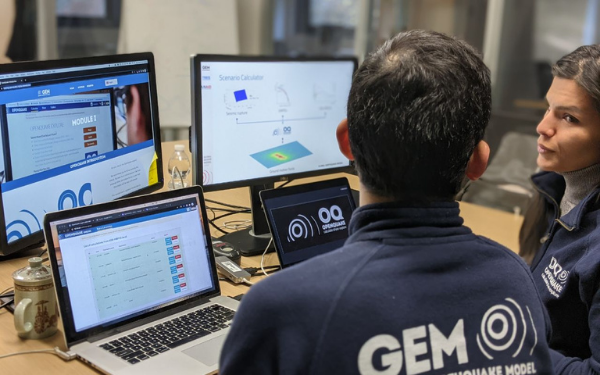Global Earthquake Model (GEM)
The GEM Foundation is a non-profit, public-private partnership that drives a global collaborative effort to develop scientific and high-quality resources for transparent assessment of earthquake risk and to facilitate their application for risk management around the globe.
Description
GEM was formed in 2009 as a non-profit foundation in Pavia, Italy, funded through a public-private sponsorship with the vision to create a world that is resilient to earthquakes. GEM’s mission is to become one of the world’s most complete sources of risk resources and a globally accepted standard for seismic risk assessment; and to ensure that its products are applied in the risk management of earthquakes and other natural hazards worldwide.
GEM builds capacity to assess and manage risk through open, transparent and collaborative seismic risk assessment at local, national, regional and global scales. Using state-of-the-art tools, GEM is committed to share and advocate open, reliable earthquake risk information, as well as tools and datasets (e.g., global exposure) to support sound disaster risk-reduction planning for natural hazards globally. We work under four core principles: Openness, Collaboration, Credibility, and Public Good.
GEM has successfully implemented hazard and risk assessment projects with regional, national and local collaborators covering more than 150 countries in the following areas: Europe, Middle East, South America, Central America, North America, Sub-Saharan Africa, Asia, Australia and the Pacific. GEM strives to deliver lasting effects on the ground in the form of reduced earthquake risk and improved earthquake risk management at local, provincial and national levels. GEM believes that high quality, open, transparent and accessible risk tools and models combined with collaborative capacity development is key to achieving a world that is resilient to earthquakes and other natural hazards, including the impact of climate change.
GEM will continue to focus on key activities such as improving the OpenQuake engine and its supporting tools and databases, and strengthening our capacity building and user support program. GEM will also extend its program of work to address more complex risk issues, especially systemic and cascading risk. Furthermore, GEM will collaborate more extensively with other hazard communities to make OpenQuake tools, models and datasets applicable to multi-hazard risk assessment, with particular focus on hazards that are exacerbated by climate change.
Did the Sendai Framework change or contribute to changes in your activities/organization? If so, how?
The Sendai Framework created a shift from managing disasters to managing risks. To help this process, it promotes “dialogue and cooperation among scientific and technological communities, other relevant stakeholders and policymakers in order to facilitate a science policy interface for effective decision-making in disaster risk management.” Furthermore, it calls to focus on the disaster risk factors and scenarios, including emerging disaster risks, in the medium and long term; to increase research for regional, national and local application; and to support action by local communities and authorities. GEM is aligned with and contributes to the Sendai Framework.
What led you to make this commitment/initiative?
What was your position before making this Voluntary Commitment / prior to the Sendai Framework?
At GEM, we are motivated to reduce earthquake risk and improve earthquake risk management especially in areas that are underserved, exposed and vulnerable to seismic risk. The contents of the Sendai Framework have strengthened the importance of our work.
To sustain our efforts, GEM has trained people from more than 100 countries advancing earthquake science and engineering, and knowledge-sharing initiatives putting local experts at the forefront of regional and national initiatives in seismic hazard and risk assessments. GEM works in the Americas, Europe, Middle East, Africa and Asia-Pacific sharing knowledge, data and best practices to increase understanding of risk through social media and online channels to bring together international and local stakeholders.

